Feathered giants and the split of Gondwana
In some beaches of Madagascar you can find in the sand, if you are lucky, fragments of egg shells that seem oddly large. They used to be, in fact, part of huge bird eggs, massive as watermelons (and able to become the most memorable omelet ever), laid by the avian titans: the extinct elephant birds. If you think that ostriches are big, imagine a bird up to 3 meters tall and 275 kilograms looking at you defiantly: the idea of that omelet probably does not seem so good anymore. There were at least seven species of elephant birds belonging to the genera Aepyornis and Mullerornis, and they are sadly gone, most likely due to the effects of human colonization of the island that also ended with the rest of its megafauna, such as the giant lemurs. The elephant birds were present in Madagascar until relatively recent times, and it is though that even some Europeans could still see them alive in the 17th century.
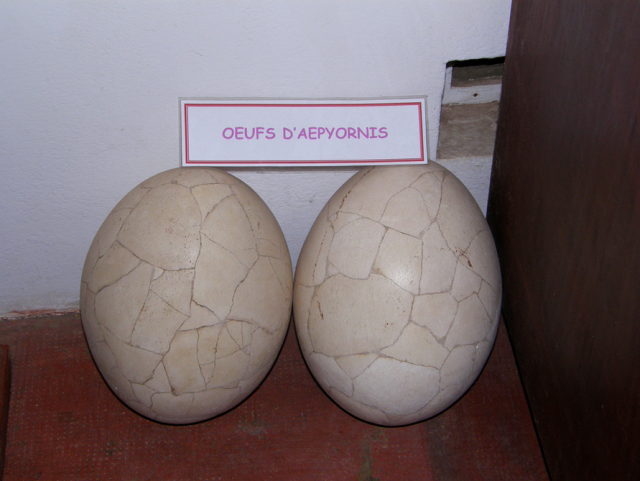
Although scientists already knew a lot about elephant birds, their evolutionary relationships and the issue of when and how they arrived to the island were still rather blurry. This is a common challenge when dealing with the history of the biota of Madagascar, the oldest island of the World: it is surprising to find out what is there but also what is not. We can illustrate this with a couple of examples:
In Madagascar, you cannot find monitor lizards (Varanidae), which are commonly spread across all the tropical regions of the Old World, but surprisingly you can find iguanian lizards, that are otherwise only native to the Americas. This biogeographic puzzle does not seem to make sense unless you start thinking about the position of the continents in the past. Madagascar was part of the giant continent Gondwana, which also included modern South America, Africa, Antarctica, India and Australasia. The pattern of fragmentation of Gondwana was complex and has always brought special attention to geologists and paleontologists that try to unravel interesting modern distributions across the southern hemisphere. The presence of iguanians in the Americas and Madagascar, but not in Africa, may thus be explained by Antarctica acting as a land bridge before the complete segregation of the island1. When the two landmasses split as a consequence of plate tectonics, iguanids remained in both sides (this is called “vicariance”).
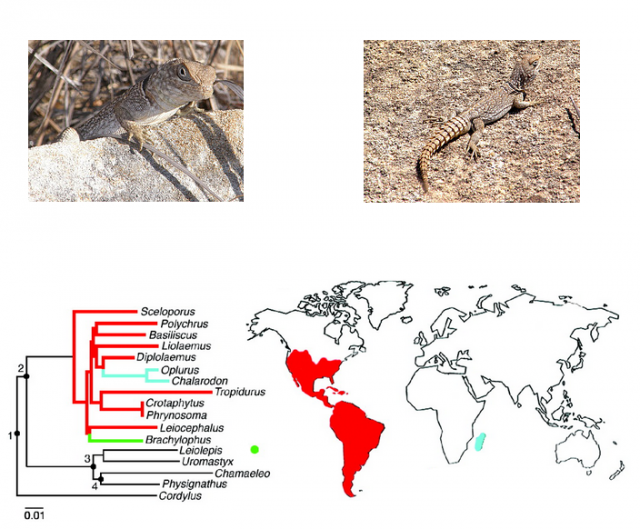
On the other hand we have the case of the Malagasy land mammals: four lineages are present in the island. Since the diversification of these lineages occurred after the complete isolation of Madagascar, the only way to explain their presence there is by discrete dispersal events from mainland Africa2. Dispersal and vicariance are two alternative hypotheses that we can invoke to explain a biogeographic disjunction, and phylogenetic inferences can be helpful to choose the right one.
Elephant birds belong(ed) to a group called ratites, birds that have mostly lost their ability to fly and often show a tendency to gigantism. Indeed, the silver medal of the titans of the feathered world in recent times belongs to the moas, native from New Zealand, and also sadly extinct after the human colonization of the archipelago. Extant ratites are present in the most important landmasses of old Gondwana and include the largest birds on the planet: ostriches (native from Africa), but also rheas and tinamous (South America), cassowaries and emu (Australasia) and the kiwis (New Zealand). All of them, with the exception of the tinamous, unable to fly.
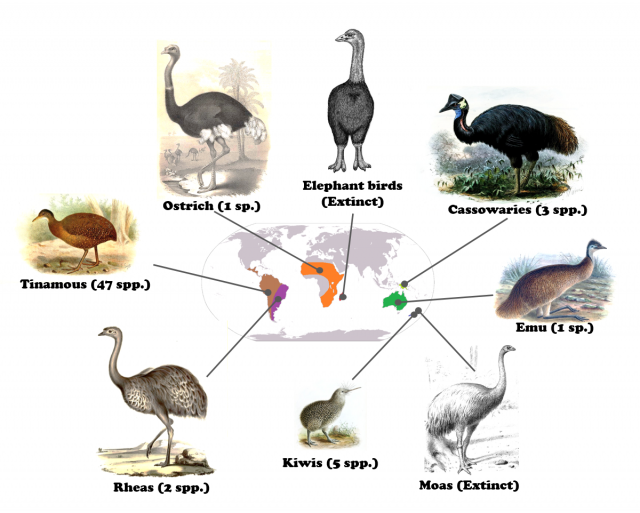
So, we have this nice and iconic group of birds with this obviously Gondwanan distribution, but how can we explain it? Was it a consequence of vicariance or dispersion? When and how did the ancestors of the elephant birds arrive to Madagascar? Since most ratites cannot fly, the most intuitive approach would try to explain the evolutionary history of this group through the vicariance hypothesis. The different ratites would have become isolated in the same order of the split of Gondwanan land masses. The ancestors of the elephant birds and the ostrich would have been segregated in the first place, after the isolation of the Africa-Madagascar piece. The kiwis and the moas, despite their extreme size difference, would have come next, when a proto-New Zealand was isolated by plate tectonics. The remaining Gondwanan continents, still united by Antarctica, would have hosted the ancestors of the other ratites.
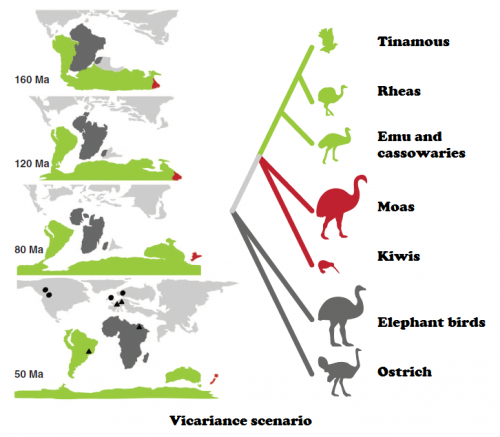
In order to test this hypothesis, genomic sequences were needed from all the representatives of the ratites, including the extinct ones. Fortunately, the techniques for DNA extraction from fossil and subfossil material have improved so much in recent years that almost complete mitochondrial genomes could be extracted from museum specimens and used to reconstruct the phylogeny of all the ratites3. The results included an unexpected revelation: elephant birds are unambiguously more closely related to kiwis than to any other group. What made this study even more puzzling is that the time frame in which the divergence of the common ancestor of elephant birds and kiwis lived was dozens of millions of years after the isolation of both, Madagascar and New Zealand.
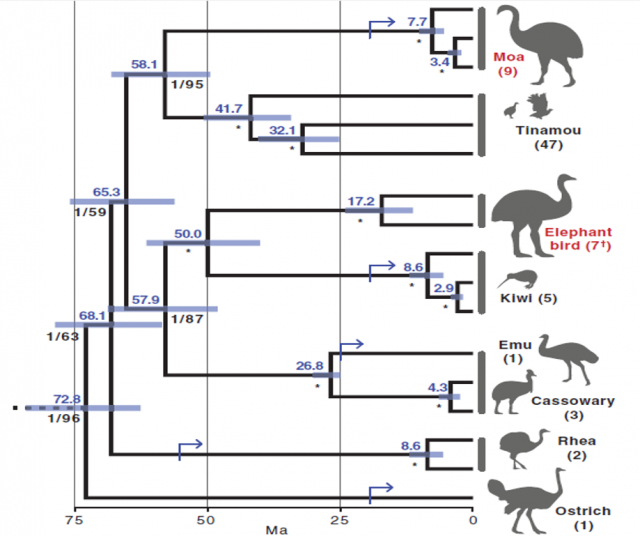
The available evidence points towards a scenario of dispersal, not of vicariance, as the most likely explanation for the origin and diversification of ratites. It seems impossible that non-flying (and non-swimming birds) would be able to colonize Madagascar and New Zealand by their own, but we must remember that current abilities of these ratites are not necessarily the same they used to have. The authors of this study suggest that many of the ancestors of extant ratites could still fly after the split of Gondwana, a circumstance that would have made the dispersal to islands more likely. This would mean that the loss of flight occurred in parallel to several ratite lineages after they reached their current geographic regions, a quite counterintuitive and surprising conclusion that, however, seems to be the most respectful with the data we have to date.
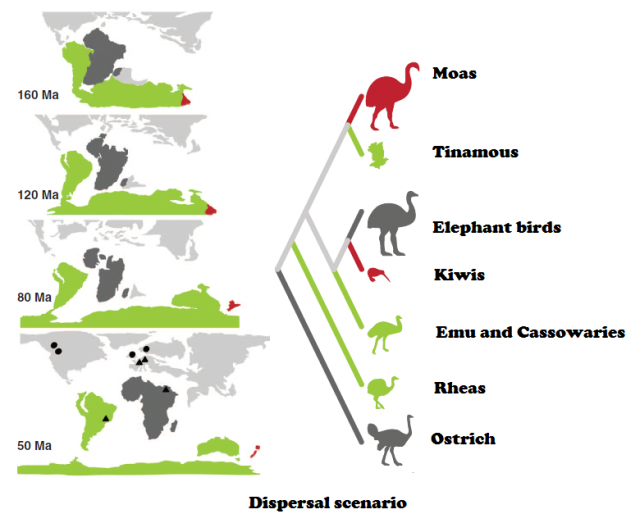
References
- Noonan, B. P. & Chippindale, P. T. Vicariant origin of malagasy reptiles supports late cretaceous antarctic land bridge. Am. Nat.168, 730–41 (2006) ↩
- Poux, C. et al. Asynchronous colonization of Madagascar by the four endemic clades of primates, tenrecs, carnivores, and rodents as inferred from nuclear genes. Syst. Biol.54, 719–30 (2005) ↩
- Mitchell K.J., J. Soubrier, N. J. Rawlence, T. H. Worthy, J. Wood, M. S. Y. Lee & A. Cooper (2014). Ancient DNA reveals elephant birds and kiwi are sister taxa and clarifies ratite bird evolution, Science, 344 (6186) 898-900. DOI: http://dx.doi.org/10.1126/science.1251981 ↩